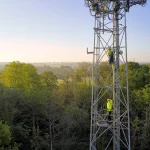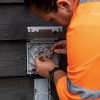Top Fastest UK Mobile and Home Broadband ISPs for H2 2024

Once again, as we reach the end of 2024, it’s time for ISPreview to take our usual biannual look back to see how the broadband download and upload speeds have changed across the fastest nationally available UK fixed line ISPs, mobile network operators and Starlink (satellite) services. But this time around we’ve made a few changes.
The results in this report stem from consumer web-based speed testing and are thus inevitably impacted by a number of factors, such as the rising coverage of faster networks (e.g. full fibre and 5G) and the level of take-up by customers. Due to this it helps to understand any key changes in network deployments since the start of 2024 (Ofcom’s Connected Nations data).
| Connection Type |
July 2024 Cover | Jan 2024 Cover |
| % Under 10Mbps (USO) | c.1% | c.1% |
| Superfast (30Mbps+) | 98% | 97% |
| Gigabit-capable (1000Mbps+) | 84% | 80% |
| Full Fibre (FTTP) | 69% | 62% |
| 4G Geographic | 88-89% | 81-88% |
| 5G Premises (Outdoor) from at least 1 operator | 90-95% | 85-93% |
| 5G Outside Premises | 61-79% | 48-78% |
In terms of fixed line broadband connectivity, the primary coverage improvements have continued to come from Fibre-to-the-Premises (FTTP) networks (Summary of Full Fibre Build Progress), which is despite quite a few alternative operators suffering job losses and a slowdown in their builds due to ongoing market pressures (i.e. rising build costs, high interest rates, fierce competition etc.).
Advertisement
Full fibre networks are currently the sole driving force behind the rise in gigabit-capable coverage, which continues to be fuelled by commercial roll-outs in urban areas and has already passed the Government’s first target (85%) under their £5bn Project Gigabit programme (this mainly focuses on the final c.10-20% of harder to reach rural premises) – this is now aiming to hit “at least” 99% (“nationwide“) cover by 2030.
Finally, in terms of mobile networks, there have been some improvements in 4G and 5G (mobile broadband) coverage, but they remain quite small to modest. Nevertheless, the industry-led £1bn Shared Rural Network (SRN) project has made a little progress on boosting geographic 4G coverage and aims to cover 95% of the UK – from at least one operator – by the end of 2025. By comparison, 5G is primarily being driven by commercial builds.
Fastest Major Fixed Broadband ISPs (H2 vs H1 2024)
The data in this report has been gathered from Thinkbroadband’s independent speedtest database (inc. ISPreview’s Broadband Speedtest). The table only includes the largest and most established independent ISPs with strong national availability, but there is a separate table for smaller alternative networks on page 2 – these are difficult to include because they aren’t yet available to the majority of premises and don’t produce much test data (fewer users).
Naturally, there are caveats to consider with speedtest based studies like this, not least because the results tend to be more reflective of take-up than network availability. For example, some ISPs may have a much larger proportion of customers on slower copper-based (ADSL or FTTC) lines, which can weigh against anybody on faster FTTP packages with the same provider (i.e. pulling average speeds down). The opposite can also be true.
Advertisement
However, the big change this time is that we’ve switched from using a mathematical “mean” to a “median” average, which tends to be more reflective of real-world speeds. But this does mean that we lose connection to our historical trends data. All of the tables in this report are thus now using median values, including the previous H1 2024 results.
Average Download Speeds – Top 8
| No. | Operator | H2 – 2024 (Top 10%) | H1 – 2024 (Top 10%) | Change % |
| 1. | Virgin Media | 243.3Mbps (720Mbps) | 214.7Mbps (675.4Mbps) | 13.32% |
| 2. | Zen Internet | 74.3Mbps (583Mbps) | 74.3Mbps (607.1Mbps) | 0% |
| 3. | Vodafone | 70.6Mbps (499.8Mbps) | 67.6Mbps (545.2Mbps) | 4.44% |
| 4. | BT | 59.3Mbps (370.8Mbps) | 53.1Mbps (313Mbps) | 11.68% |
| 5. | Sky Broadband | 45.4Mbps (121.9Mbps) | 43.4Mbps (142.6Mbps) | 4.61% |
| 6. | TalkTalk | 42.1Mbps (149.3Mbps) | 37.7Mbps (114.2Mbps) | 11.67% |
| 7. | Plusnet | 41.7Mbps (151Mbps) | 44Mbps (147.7Mbps) | –5.23% |
| 8. | EE | 35.8Mbps (151.3Mbps) | 32.8Mbps (103.8Mbps) | 9.15% |
Average Upload Speeds – Top 8
| No. | Operator | H2 – 2024 | H1 – 2024 | Change % |
| 1. | Virgin Media | 31.2Mbps | 26.3Mbps | 18.63% |
| 2. | Zen Internet | 19.9Mbps | 19.2Mbps | 3.65% |
| 3. | Vodafone | 18.1Mbps | 17.9Mbps | 1.12% |
| 4. | BT | 16.8Mbps | 15.8Mbps | 6.33% |
| 5. | Sky Broadband | 12.9Mbps | 12.3Mbps | 4.88% |
| 6. | TalkTalk | 10.8Mbps | 9.1Mbps | 18.68% |
| 7. | Plusnet | 9.2Mbps | 10.3Mbps | -10.68% |
| 8. | EE | 8.2Mbps | 7.3Mbps | 12.33% |
Overall, the average download speed of the top national providers was 76.56Mbps (up from 70.95Mbps) and the average upload speed hit 15.88Mbps (up from 14.77Mbps).
Advertisement
Perhaps unsurprisingly, given the launch of their new 2Gbps services and a symmetric speeds add-on during 2024, Virgin Media is the provider that saw some of the biggest improvements in both download and upload speeds this time around. But in a rare change, we also saw a similarly positive improvement from TalkTalk. On the flip side, Plusnet suffered an unexpected decline.
Satellites
We’ve also been keeping track of the results for SpaceX’s satellite based Starlink broadband service. Sadly, not enough data exists to include other satellite platforms or providers, but that may change in the future. Otherwise, Starlink’s download performance appears to have fallen during the last half of 2024 and it’s a similar story for their upload performance, but the declines are small to modest.
| H2 – 2024 (Top 10%) | H1 – 2024 (Top 10%) | |
| Download | 66.8Mbps (157Mbps) | 73.9Mbps (156.9Mbps) |
| Upload | 10.2Mbps (16.7Mbps) | 11Mbps (16.4Mbps) |
Now flick over to page 2 to see how the fastest full fibre alternative network (altnet) ISPs and mobile operators performed.
Mark is a professional technology writer, IT consultant and computer engineer from Dorset (England), he also founded ISPreview in 1999 and enjoys analysing the latest telecoms and broadband developments. Find me on X (Twitter), Mastodon, Facebook, BlueSky, Threads.net and Linkedin.
« 2024 vs 2023 – UK Broadband and Mobile Speeds vs the World






















































It would be very interesting for alt nets to show their future predictions once investment and loans have stopped, FTTH at around 27 pounds per month. Has anyone looked into how long cheap Chinese fibre lasts in the ground.